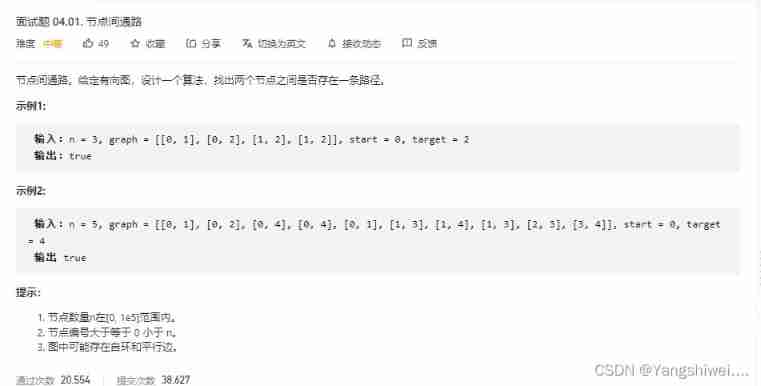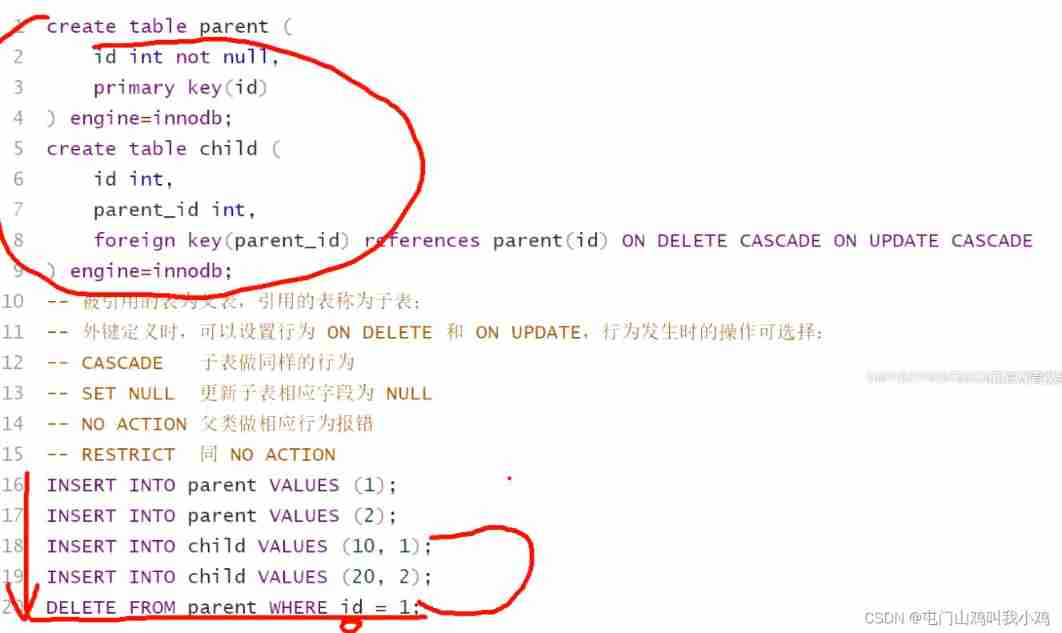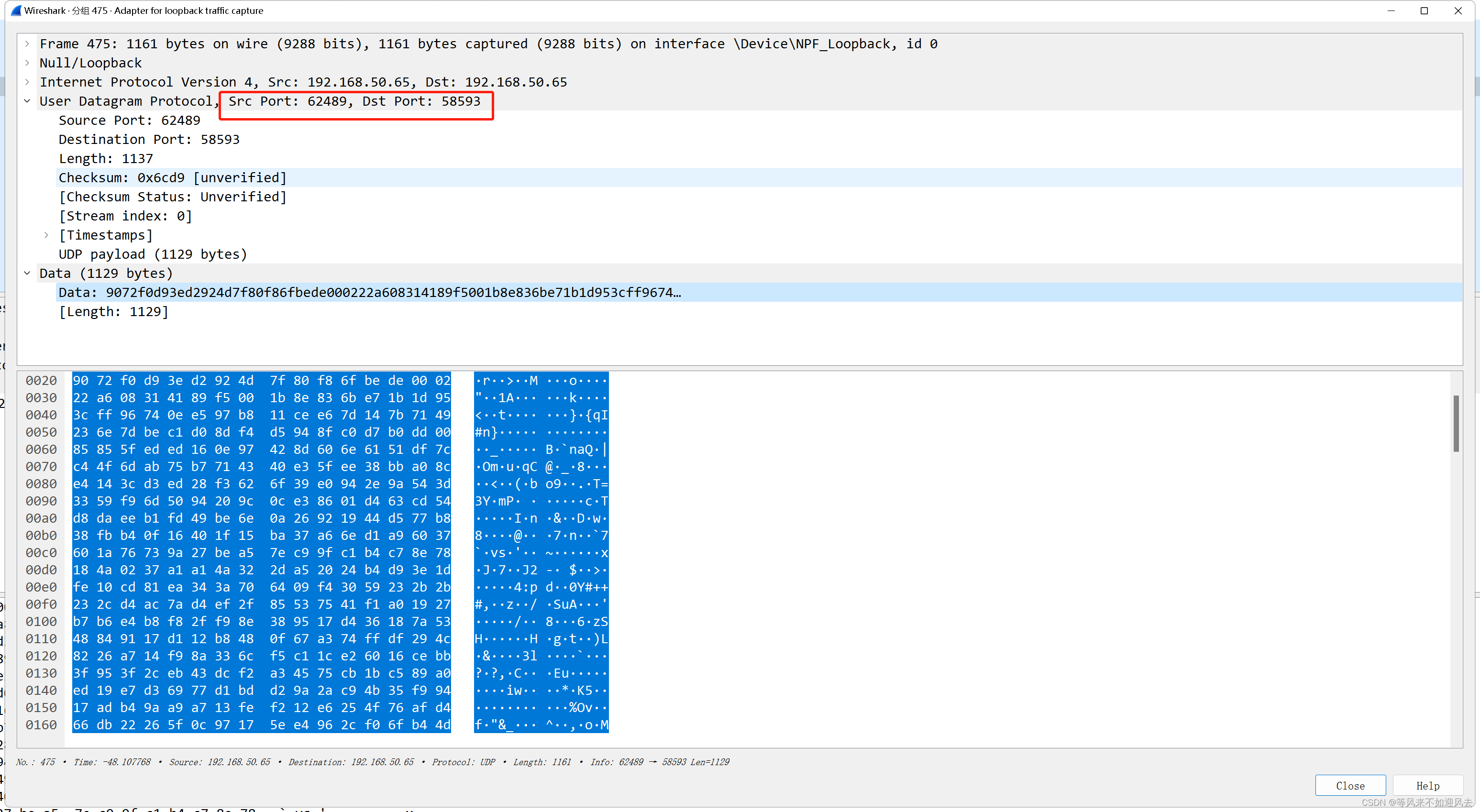当前位置:网站首页>Binary tree and heap building in C language
Binary tree and heap building in C language
2022-07-07 07:57:00 【pythoncjavac++】
Catalog
Related concepts of binary tree
Binary tree related calculation formula
The insertion of a binary tree
Judge whether the binary tree is empty and the number of binary tree elements
Related concepts of binary tree
Binary tree : A binary tree is a tree structure in which each node has at most two subtrees .
Node degree : The number of subtrees a node contains .
Brother node : Nodes with the same parent are called siblings .
Leaf node or terminal node : A node without any children is called a leaf node .
Parent node 、 Child node : If multiple nodes are connected under a node , Then this node is called the parent node , The node below it is called a child node .
The degree of a tree : The maximum degree of all nodes . The degree of a binary tree is less than or equal to 2.
Depth of tree : Start at the root node ( Its depth is 0) Accumulated layer by layer from top to bottom .
The height of the tree : Start with the leaf node ( Its height is 0) Accumulated layer by layer from bottom to top .
The root node : The top node of a tree is called the root node .
The ancestor of node : From the root to all nodes on the branch through which the node passes .
The forest : from m A collection of disjoint trees .
Binary tree related calculation formula
1.n A binary tree of nodes has a total of ((2n)!)/(n! * (n+1)!) Kind of
2.n The second layer of a binary tree n Layers up to 2^(n-1) individual
3. Binary tree node calculation formula N = n0+n1+n2, Degree is 0 The leaf node ratio of is 2 The number of nodes is one more .N=1*n1+2*n2+1
4. have n The depth of a complete binary tree of nodes is log2(n) + 1
5. The height of the tree : The number of edges from the root node to the largest of all leaf nodes . Depth of tree : The maximum number of nodes from the root node to all leaf nodes .
Here is how to calculate the relationship between father and son ( a key )
leftchild=parent*2+1
rightchild=parent*2+2
parent=(child-1)/2
Next is how to create a binary tree
The creation of binary tree
typedef int HPDataType;
typedef struct Heap
{
HPDataType* a;
int size;
int capacity;
}HP;
Initialization of binary tree
void HeapInit(HP* php)
{
php->a = NULL;
php->size = php->capacity = 0;
}Destruction of binary tree
void HeapDestroy(HP* php)
{
assert(php);
free(php->a);
php->a = NULL;
php->size = php->capacity = 0;
}
The insertion of a binary tree
void swap(HPDataType* a, HPDataType* b)
{
HPDataType as = *a;
*a = *b;
*b = as;
}
void AdjustUpd(HPDataType* a, int child)
{
int parent = (child - 1) / 2;
while (child > 0)
{
if (a[parent] < a[child])
{
swap(&a[parent], &a[child]);
child = parent;
parent = (child - 1) / 2;
}
else
{
break;
}
}
}
void HeapPush(HP* php, HPDataType x)
{
assert(php);
if (php->size == php->capacity)
{
int newca = php->capacity == 0 ? 4 : php->capacity * 2;
HPDataType* newhp = (HPDataType*)realloc(php->a, newca*sizeof(HPDataType));
if (newhp == NULL)
{
perror("realloc");
exit(-1);
}
php->a = newhp;
php->capacity = newca;
}
php->a[php->size] = x;
php->size++;
AdjustUpd(php->a, php->size-1);
}The deletion of binary trees
void HeapPop(HP* php)
{
assert(php);
if (HeapEmpty(php))
{
return;
}
php->a[0] = php->a[php->size - 1];
php->size--;
AdjustDownd(php->a,php->size,0);
}Judge whether the binary tree is empty and the number of binary tree elements
bool HeapEmpty(HP* php)
{
return php->size == 0;
}
int HeapSize(HP* php)
{
assert(php);
return php->size ;
}Building the heap
// Little heap
void AdjustDown1(HPDataType* a, int size, int parent)
{
int child = parent * 2 + 1;
while (child < size)
{
if (child+1 < size && a[child + 1] < a[child])
{
child++;
}
if (a[child] < a[parent])
{
swap(&a[child], &a[parent]);
parent = child;
child = parent *2 +1;
}
else
break;
}
}
// A lot
void AdjustDownd(HPDataType* a, int size, int parent)
{
int child = parent * 2 + 1;
while (child < size)
{
if (child + 1 < size && a[child + 1] > a[child])
{
child++;
}
if (a[child] > a[parent])
{
swap(&a[child], &a[parent]);
parent = child;
child = parent *2 +1;
}
else
break;
}
}
Here are the codes for building large piles and small piles
边栏推荐
- 2022 simulated examination question bank and online simulated examination of tea master (primary) examination questions
- [P2P] local packet capturing
- Mysql高低版本切换需要修改的配置5-8(此处以aicode为例)
- [UVM foundation] what is transaction
- [Matlab] Simulink 自定义函数中的矩阵乘法工作不正常时可以使用模块库中的矩阵乘法模块代替
- 【经验分享】如何为visio扩展云服务图标
- 这5个摸鱼神器太火了!程序员:知道了快删!
- buuctf misc USB
- [webrtc] m98 Screen and Window Collection
- C language communication travel card background system
猜你喜欢

为什么要了解现货黄金走势?

misc ez_usb

Li Kou interview question 04.01 Path between nodes
![[experience sharing] how to expand the cloud service icon for Visio](/img/42/dba9f78f3fb2049dad8b343b0b36e5.png)
[experience sharing] how to expand the cloud service icon for Visio

Linux server development, MySQL index principle and optimization

numpy中dot函数使用与解析

2022年全国最新消防设施操作员(初级消防设施操作员)模拟题及答案

【p2p】本地抓包

即刻报名|飞桨黑客马拉松第三期等你挑战

2022焊工(初级)判断题及在线模拟考试
随机推荐
快速使用 Jacoco 代码覆盖率统计
Route jump in wechat applet
【数学笔记】弧度
Pytest + allure + Jenkins Environment - - achèvement du remplissage de la fosse
[mathematical notes] radian
Qt学习26 布局管理综合实例
Resource create package method
Technology cloud report: from robot to Cobot, human-computer integration is creating an era
C language flight booking system
C语言二叉树与建堆
QT learning 28 toolbar in the main window
leanote私有云笔记搭建
Linux server development, SQL statements, indexes, views, stored procedures, triggers
Linux server development, detailed explanation of redis related commands and their principles
【VHDL 并行语句执行】
2022制冷与空调设备运行操作复训题库及答案
Is the test cycle compressed? Teach you 9 ways to deal with it
Few-Shot Learning && Meta Learning:小样本学习原理和Siamese网络结构(一)
[UVM practice] Chapter 2: a simple UVM verification platform (2) only driver verification platform
C language communication travel card background system